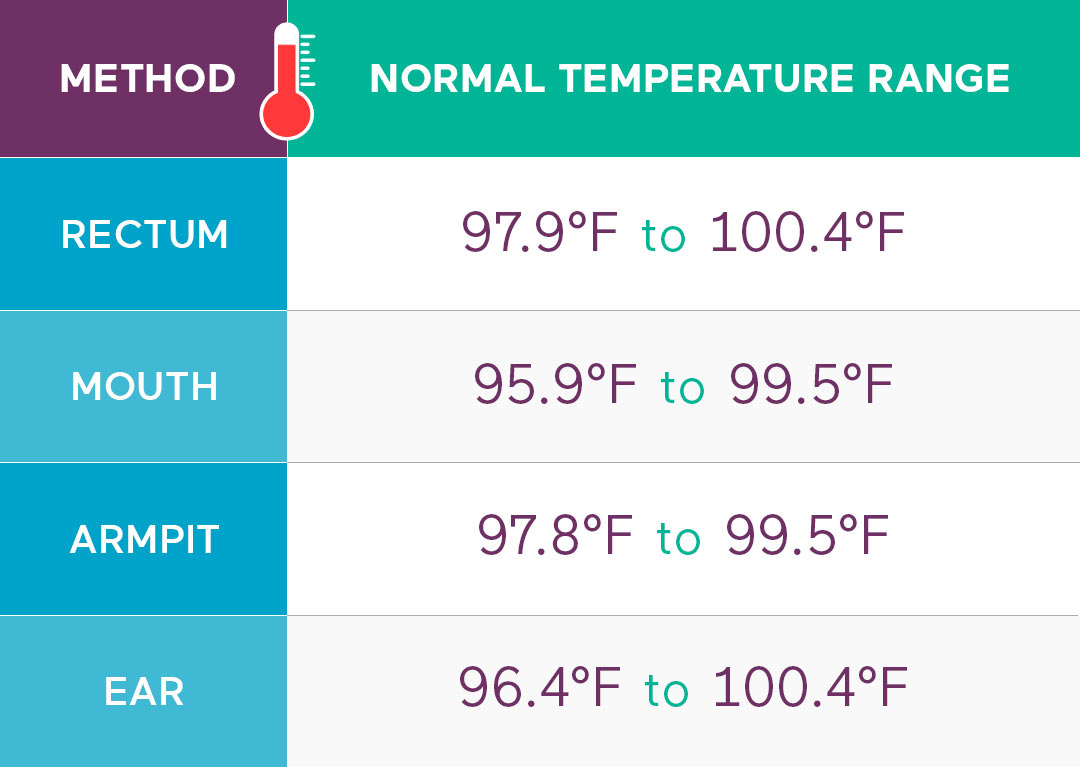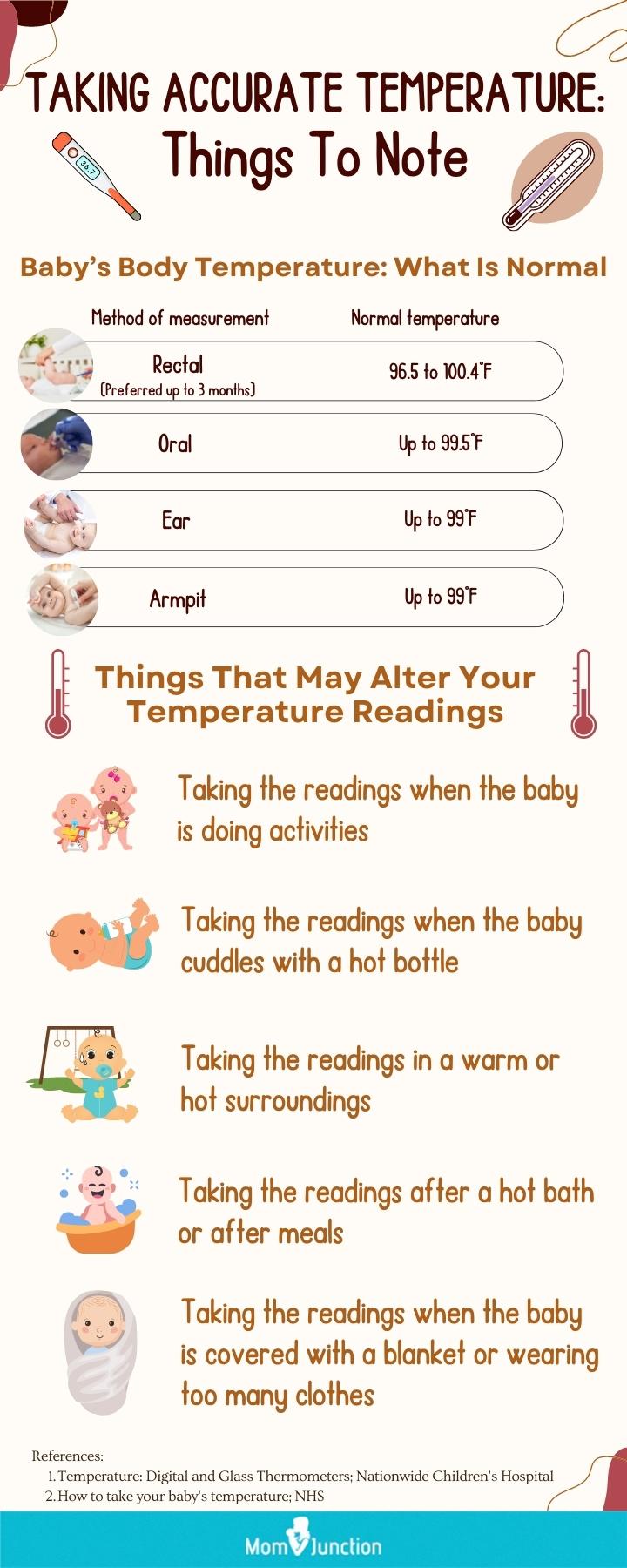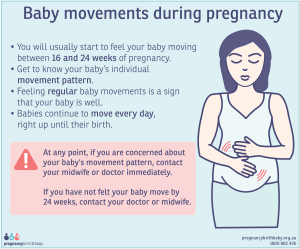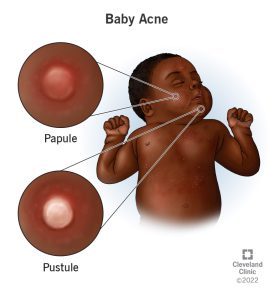A normal baby temperature armpit is typically between 97.5°F and 99.3°F. When it comes to understanding your baby’s health, knowing their normal body temperature is essential.
A baby’s temperature can be taken via the armpit, and the normal range is usually between 97. 5°F and 99. 3°F. Monitoring your baby’s temperature can help detect any potential health concerns early on. It’s important to always use a reliable thermometer and consult a healthcare professional if you have any concerns about your baby’s temperature.
Understanding what is considered a normal temperature for a baby can give you peace of mind and help you provide the best care for your little one.
Normal Baby Temperature Armpit
Babies are delicate little beings, and as a parent, it’s essential to keep a close eye on their health. One crucial aspect of their well-being is their body temperature. Understanding what constitutes a normal baby temperature armpit can provide reassurance and help identify potential health concerns.
What Is Considered Normal?
Normal baby temperature armpit typically ranges between 97.6°F to 99.6°F (36.4°C to 37.6°C). However, individual variations exist, and what’s considered normal for one baby may slightly differ for another.
Factors Affecting Armpit Temperature
Several factors can influence a baby’s armpit temperature, including clothing layers, room temperature, and activity level. Additionally, illness, teething, or immunizations may cause slight fluctuations in a baby’s temperature.

Methods Of Measuring
When it comes to monitoring a baby’s temperature, it is crucial to use accurate methods of measuring. Methods of Measuring can vary, but the reliability of the reading is of utmost importance. Here, we will explore the Using a Digital Thermometer and provide Tips for Accurate Reading.
Using A Digital Thermometer
A digital thermometer is a precise tool for measuring a baby’s temperature. It offers quick and accurate results, making it a popular choice among parents. Using a digital thermometer is simple and safe, providing a clear digital display of the temperature reading.
Tips For Accurate Reading
- Ensure the baby’s armpit is dry before taking the temperature.
- Place the digital thermometer snugly in the baby’s armpit for an accurate reading.
- Avoid measuring the temperature immediately after the baby has been swaddled or wrapped in a blanket.
- Wait for the thermometer to beep or indicate that the reading is complete before removing it.
- Record the temperature accurately for future reference or to share with healthcare providers if needed.
Interpreting The Results
Understanding your baby’s armpit temperature is crucial for assessing their health.
When To Be Concerned?
If the baby’s armpit temperature exceeds 100.4°F, seek medical advice promptly.
Signs Of Fever
- Flushed skin
- Irritability
- Poor appetite
Comparison With Other Methods
When it comes to monitoring a baby’s temperature, the armpit method is often preferred by parents due to its ease and comfort. However, it’s essential to understand how armpit temperature measurements compare to other methods to ensure accurate readings and proper care for the baby.
Armpit Vs. Rectal Temperature
Comparing armpit temperature with rectal temperature can provide insights into the accuracy and reliability of the armpit method. While rectal temperature is considered the most accurate method for measuring a baby’s temperature, it is also the most invasive and discomforting for the baby. On the other hand, armpit temperature provides a non-invasive and convenient alternative, making it a suitable choice for parents seeking a less intrusive approach.
Accuracy Of Armpit Temperature
Understanding the accuracy of armpit temperature measurements is crucial for ensuring the baby’s well-being. Although armpit temperature may not be as precise as rectal or oral measurements, it still offers a reliable indication of the baby’s body temperature. It’s essential to follow proper techniques, such as ensuring the thermometer is in full contact with the skin and allowing sufficient time for an accurate reading.
Tips For Parents
Learn how to accurately measure your baby’s temperature in the armpit and ensure it falls within the normal range. Follow these essential tips to help parents confidently monitor their baby’s health and well-being. Understanding the normal temperature range for babies can provide peace of mind and prompt action if needed.
Tips for Parents — How to Keep Baby Comfortable — Babies are sensitive to temperature changes. Dress them in light, breathable clothes. — Maintain a comfortable room temperature around 68-72°F to keep your baby cozy. — Use a fan or adjust the thermostat to create a comfortable environment for your little one. — What to Do in Case of Fever — In case of a fever, stay calm and monitor your baby’s temperature regularly. — Give your baby plenty of fluids to prevent dehydration during a fever. — Consult your pediatrician if your baby’s temperature rises above 100.4°F. — Remember, a parent’s intuition is powerful. Trust your instincts and seek medical help when needed.

Myths And Facts
As parents, one of the most significant concerns is the health and well-being of our little ones. One of the crucial aspects of this is monitoring their temperature to ensure that they are not running a fever. However, there are many myths and misconceptions about normal baby temperature armpit that can cause unnecessary worry and confusion for parents. In this article, we will explore these myths and provide evidence-based information to help you understand what is normal and what is not.
Common Misconceptions
There are many misconceptions about normal baby temperature armpit that can cause unnecessary worry for parents. Let’s take a look at some of the most common myths:
| Myth | Fact |
| Babies should always have a temperature of 98.6°F (37°C). | Normal body temperature varies from person to person, and babies have a slightly higher average temperature than adults. A normal temperature range for babies is between 97°F (36.1°C) and 100.4°F (38°C). |
| A rectal temperature is the most accurate way to measure a baby’s temperature. | An armpit temperature is a safe, non-invasive, and accurate way to measure a baby’s temperature. While a rectal temperature may be more accurate, it is also more invasive and can cause discomfort to the baby. |
| A low-grade fever is not a cause for concern. | While a low-grade fever may not be as concerning as a high fever, it is still a sign that the baby’s body is fighting an infection or illness. It is essential to monitor the baby’s temperature and contact a healthcare provider if it persists or other symptoms develop. |
Evidence-based Information
Now that we have debunked some common myths, let’s take a look at evidence-based information about normal baby temperature armpit:
- A baby’s temperature can vary throughout the day and can be affected by factors such as age, activity level, and environment.
- A fever is generally defined as a temperature of 100.4°F (38°C) or higher and can be a sign of an infection or illness.
- If a baby’s temperature is elevated but not considered a fever, it may still be a sign that the baby is fighting an infection or illness.
- If a baby has a fever, it is essential to monitor their temperature, offer fluids, and contact a healthcare provider if the fever persists or other symptoms develop.
It is important for parents to be aware of what is normal for their baby’s temperature and to understand when to seek medical attention. By understanding the facts and debunking common myths, parents can feel confident in monitoring their baby’s temperature and providing the best care possible.

What Is Considered A Fever For A Baby Armpit?
A fever for a baby’s armpit is considered when the temperature is 100. 4 degrees Fahrenheit or higher.
How Accurate Is Armpit Thermometer Baby?
The armpit thermometer for babies is generally accurate, but may not be as precise as other methods. It is important to use it correctly for the most accurate reading.
What Temp Is Too High For Armpit?
A temperature above 99. 5°F is considered high for an armpit. It may indicate fever or infection.
Is 99.5 A Fever For A Child Underarm?
A temperature of 99. 5 underarm is considered a mild fever for a child.
Conclusion
Understanding your baby’s armpit temperature is crucial for their well-being. Keep track of any changes and consult a healthcare professional if necessary. Remember, a normal temperature range is essential for your baby’s health and development. Stay informed and proactive for a happy, healthy baby.





